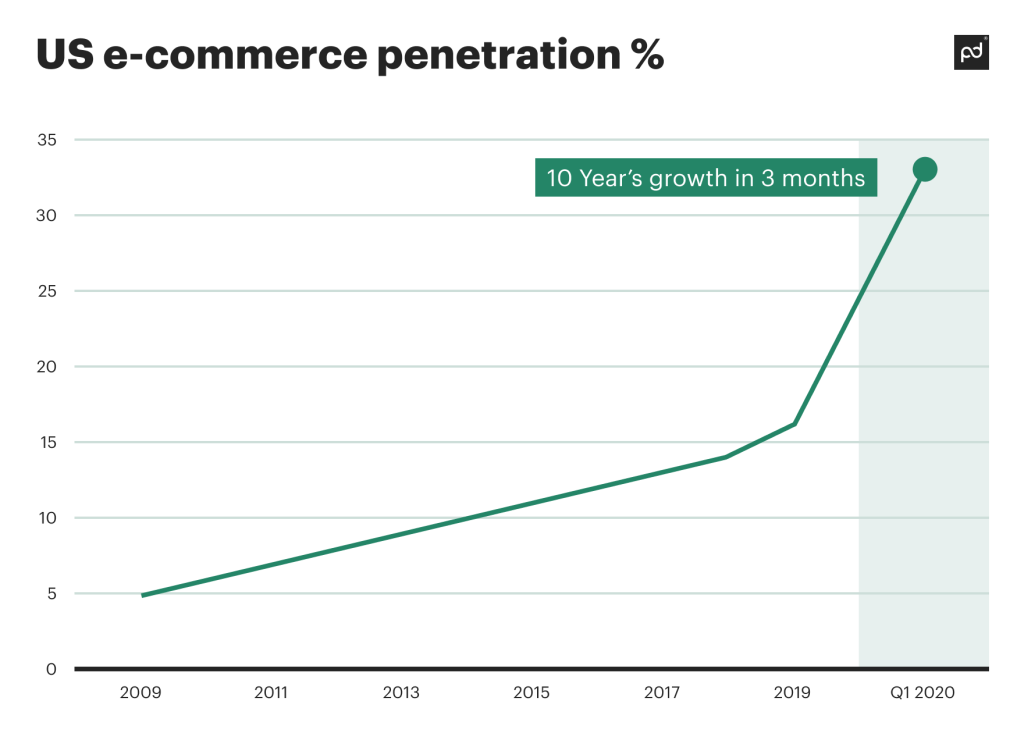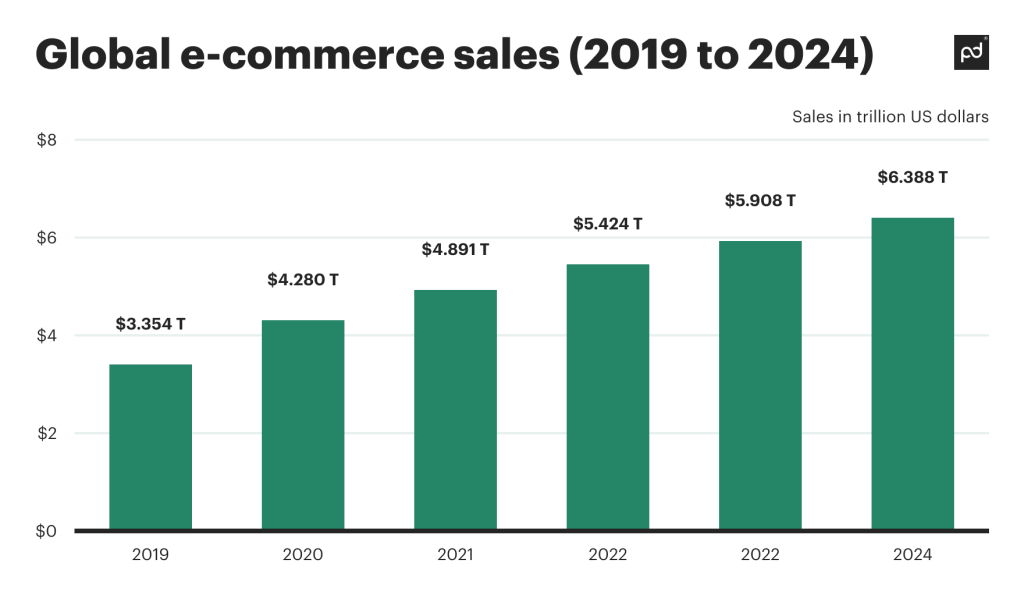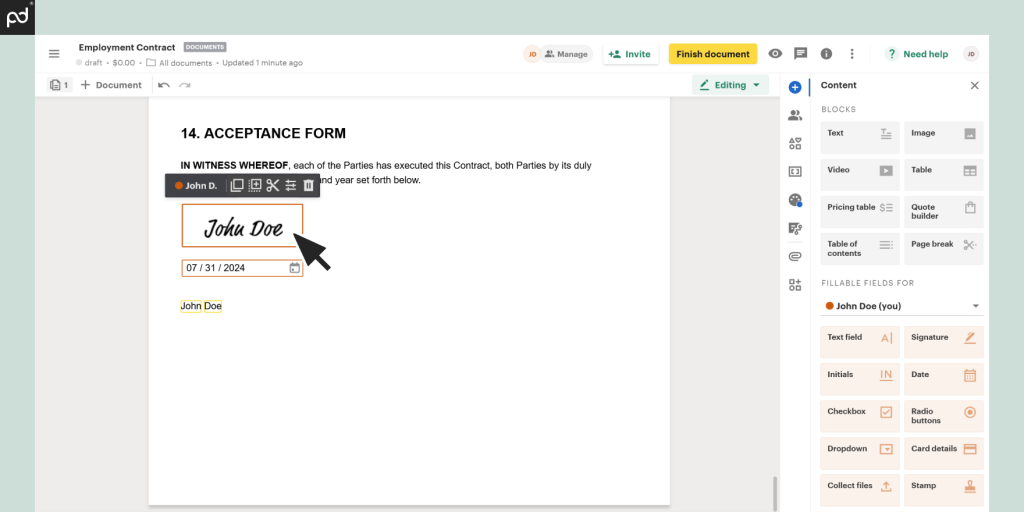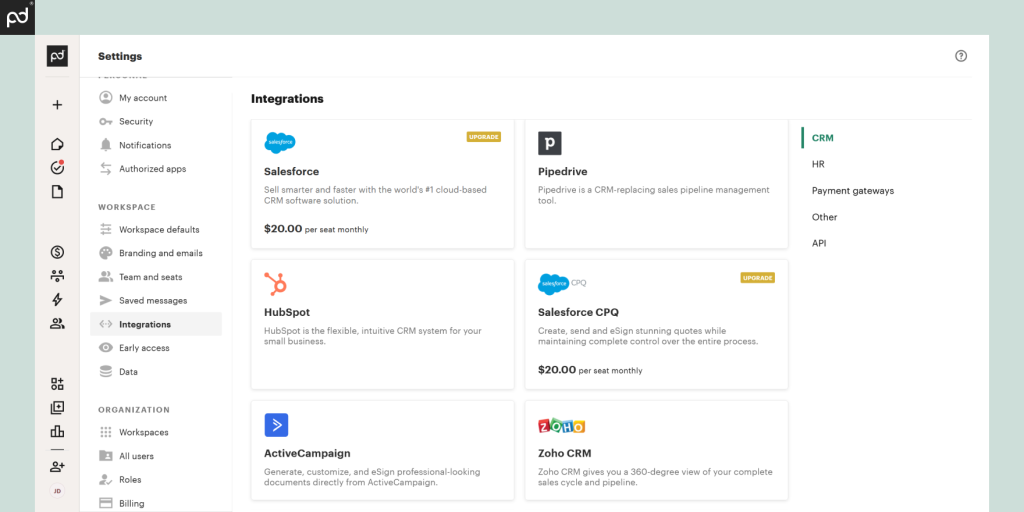Direct sales is a popular business approach that allows companies to sell products directly to consumers without the need for intermediaries.
This method can provide several advantages, including higher profit margins, better customer relationships, and greater control over the brand.
Let’s go over the ins and outs of direct sales, what makes it different from multi-level marketing (MLM), what to include in an effective direct sales model, and how PandaDoc can support your direct sales strategy to set you up for success.

What is direct sales?
Direct sales is a method of direct selling products straight to the consumer in a non-retail environment.
This can include door-to-door sales, online sales, and sales through personal networks in-person with salespeople.
Unlike traditional retail models, direct sales bypasses middlemen, such as wholesalers and retailers, allowing companies to maintain more control over their product distribution and the customer experience.
Today direct sales are a lot easier thanks to advances in platforms like social media.
Brands can act as their own distributors through various marketing strategies in the algorithm to target their key audience as e-commerce continues to grow.

Direct sales vs. multi-level marketing (MLM)
While direct sales and MLM can involve similar techniques, they are not the same. Direct sales focus on selling products directly to consumers (D2C) without a complex hierarchical structure.
MLM involves recruiting individuals to sell products and earn commissions from their sales and from the sales made by their recruits through referrals.
This is often more costly and time-consuming as the need to vet, hire, and train salespeople are all involved.
Direct sales is a much more straightforward sales processes.
Whereas MLMs are more complex, and are often referred to as pyramid schemes. This is because the focus shifts more to the goals of individual sales representatives rather than the actual sale of products.
For businesses considering these models, understanding the difference is a necessary first step to choosing the option that best suits your long-term goals both financially and from a broader perspective.
To do this, you need to consider your customer’s needs and the most effective sales channel to reach them.
Are they spending time on social media? Do they prefer brick-and-mortar stores? You need to get really clear on who you’re selling to before coming up with your sales model and marketing plan.
The direct sales approach is frequently utilized in the following sectors:
- SaaS Sales: Retail involvement is rarely necessary for software purchases due to online distribution, making D2C a primary choice.
- Enterprise companies can benefit from a direct and personalized approach, especially for large transactions.
- SMB Sales: Small and medium-sized businesses typically start with local markets before expanding to indirect sales channels.
Examples of industries utilizing direct sales
55% of customers prefer to buy a product directly from a business.
Direct sales is a smart and effective marketing choice across a variety of industries, with the ability to offer personalized services.
Here are some examples of industries that have successfully implemented direct sales:
Real-life insights
A 2019 case study from the Harvard Business Review detailed the success of companies of all sizes across multiple industries with direct sales, particularly through Amazon.
“Amazon Prime has over 100 million members, and it’s growing. Imagine the sales if a fraction of them ordered the new bike — and imagine how many of them will if two-day delivery is available. Someone gets excited about e-bikes on a Wednesday, and by Friday she has one of her own to ride. The possibilities are endless. You know who sells on Amazon? Apple. Versace. Rolex. Jimmy Choo, Mark — Jimmy Choo. And more will follow. Whichever companies don’t will be on the wrong side of retail history.”
Many other brands — Warby Parker, Casper, Allbirds, Bonobos, and BarkBox to name a few — have had success with direct-to-consumer sales.
According to Webspero, AI Chatbots will continue to play a role in D2C brands going forward.
“To build strong relationships with your customers, as a direct-to-consumer brand, it’s worth noting that 92% more brands use chatbots as part of their conversational marketing strategies. Since 2019, 11.9% of customers have started communicating with brands using chatbots.”

Expanding direct sales into tech-related industries
Direct sales remains a go-to choice for many businesses in tech-related industries. With the ease of purchasing and downloading SaaS, purchases are right at customer’s fingertips.
This expands into entertainment, with the option to purchase and download movies, TV shows, books, video games, songs, and more.
It’s never been easier to purchase something. Customers have the ability to buy downloadable goods through their phone, computers, gaming systems and even direct on their television.
Enhancing your direct sales strategy with data-driven insights
Being able to access and utilize data-driven insights from your sales can boost the effectiveness of your direct sales strategy.
Understanding market trends, consumer behavior, and industry-specific data allows you to make more informed decisions.
This could mean a more tailored approach for customers through things like social media ads, emails, and the like.
For example, tracking the performance of sales documents using PandaDoc’s AI analytics tools provides valuable feedback on what’s working, what’s not, and where improvements can be made.
How to create a direct sales model
Creating a successful direct sales model requires research, planning, and execution. As you begin, here are some important factors to consider:
1. Define your product and target market
Start by identifying the products you’re selling and the target market for them.
This could mean multiple target markets for multiple products, or one for each depending on your business.
Understanding your customer’s needs and preferences for when, where, and how they like to make purchases is key when creating your approach.
2. Develop a sales strategy
Your sales strategy should outline how you will approach potential customers, advertise your products, and close sales.
One example would be to offer incentives such as a coupon in exchange for a customer’s email and/or phone number.
This gets you the customer’s info. A step further would be to place a time limit on the coupon, incentivizing them to purchase quickly.
Another method would be to offer discounts or small free additions in exchange for a positive review online, or perhaps a promo such as a customer tagging your product.
Whatever the strategy, it needs to include the primary benefits of direct sales: personalization and relationship building.
3. Train your sales team
Invest in training your sales team. They should be knowledgeable and confident about the products and know how to provide excellent customer service.
Training programs can include product knowledge sessions, sales tactics workshops, and role-playing exercises.
Knowing your customer’s pain points will help sales reps find ways to position your products as the solution.
4. Compensation plans for salespeople
If you have salespeople, you need a compensation plan that motivates your sales team.
This can include things like commissions, bonuses, and other incentives for reaching sales goals (typically set on a quarterly basis).
A well-structured compensation plan can drive performance and incentivize salespeople to meet and exceed their goals.
How PandaDoc can help with direct sales models
PandaDoc is an excellent tool for businesses looking to optimize their direct sales model.
Here’s how:
Streamlined document creation

PandaDoc allows you to create professional sales documents, proposals, and contracts quickly and easily. This can save time and ensure consistency in your sales model.
E-signature capabilities

With PandaDoc’s e-signature feature, you can close deals faster by allowing customers to sign contracts and agreements electronically.
Tracking and analytics

PandaDoc provides tracking and analytics tools that give insights into how your documents are performing.
You can see when a document is opened, viewed, and signed, helping you gauge customer interest and follow up appropriately.
Integration with CRM systems

PandaDoc integrates seamlessly with many CRM systems, ensuring that your sales data is up-to-date.
Direct sales can lead to higher profit margins, improved and sustainable customer relationships, and control over product distribution.
By understanding the basics of direct sales, what differentiates it from MLM, and following steps to create an effective sales model, you can drive growth and long-term success.
PandaDoc makes the direct sales process easy.
As more industries tune into the benefits of direct sales, incorporating this sales model can lead to significant competitive advantages and a more personalized customer experience.
Disclaimer
PandaDoc is not a law firm, or a substitute for an attorney or law firm. This page is not intended to and does not provide legal advice. Should you have legal questions on the validity of e-signatures or digital signatures and the enforceability thereof, please consult with an attorney or law firm. Use of PandaDoc services are governed by our Terms of Use and Privacy Policy.


